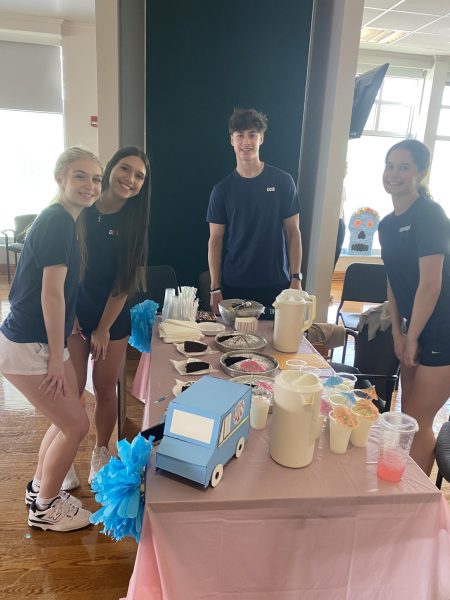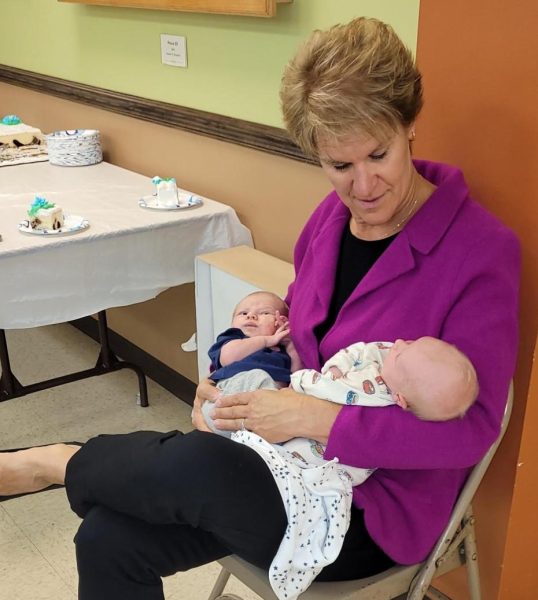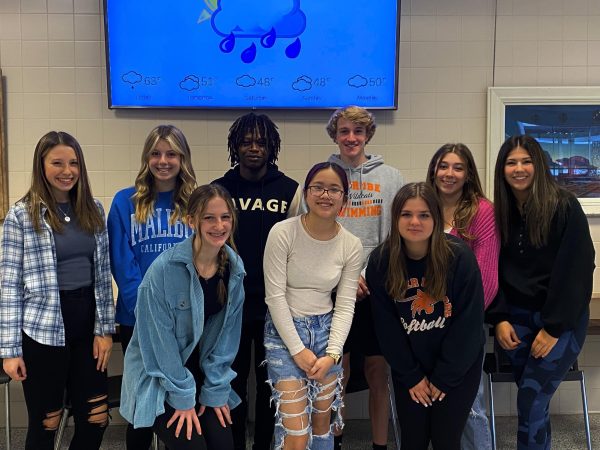Sourcing Food Among Supply Chain Concerns
When was the last time you went to your favorite restaurant? Do you have a favorite menu item? Did they have that food item the last time you were there? All across the world, nations are suffering from supply chain issues. These shortages are creating economic impacts, but are also making it increasingly more difficult to find favorite foods… or find food sourcing at all. Public schools are responsible for supplying a large amount of meals everyday and under these current circumstances, food sourcing directors are having an increasingly difficult time.
Greater Latrobe School District is among every public school nation-wide working hard to feed its students amidst these supply chain issues. In the five schools within the district, Jillian Burge, director of food services, juggles quite a few responsibilities in order to get food onto every students’ plate.
What are the supply chain issues?
Supply chain issues occur when the demand is high, but supplies are low according to Jillian Burge, MS, RDN, LDN. Two main factors influence the current climate: staffing shortages due to COVID-19 and A-typical purchasing demands. Most manufacturing plants are designed to work with high utilization rates, so products are being made in accordance to their projected future sales allowing for very little flexibility. With these A-typical buying patterns, companies are struggling to increase the volume of their products comparatively to what estimated sales would be.
“The demand for food is high because there are more of you eating. But the supply is not there. So now you have manufacturers trying to produce more food for K12 (schools country-wide) because every school in the United States has free meals,” explains Mrs. Burge, “Our Participation has gone through the roof. I would say breakfast has tripled district-wide, lunch has at least doubled, if not more district-wide. The federal government dictates what we do, and they are the ones that flipped over all of the meals to be free last year and then extended it to this year.”
“It is wonderful to be able to serve all the students, but then we came into this year short-staffed, so we then had to modify how we did the menu, modify our options and modify how many stations were open so that we had enough team members to serve you guys.”
How has the staffing shortages affected the district?
“The world is just short staffed, but at GLSD, we had a lot of retirees last school year. So we have people retiring but not people applying for those jobs. We have at least one, if not two open positions at every school in the district,” said Burge.
Burge offers different perspectives about the competition when applying for jobs. She said, “Everywhere you go, there’s a hiring sign; at a restaurant or fast food place, everywhere. So if I am unemployed and looking for a job, I have a lot of options to work where I want to.” She continues, “So I could hire someone and they could work for two weeks and decide ‘I dont like it’, and then go to the mall for two weeks and if they decide they don’t like that they can get a job in a restaurant because there’s so many options out there.”
Burge says that the staff is not unfamiliar with change, “What that means for us, is that the cafeteria workers that do work everyday; they are working a little harder, their hours are a little longer, they make up for the work that [absent] person isn’t there to do. We’ve been adapting for at least two years: changing from serving in the cafeteria, shutting down because of the pandemic, serving out of the back door, serving the community in their cars to take food home.”
What about our meals?
“We still try to keep it balanced. [Students] have a main entree that has a grain and a protein, fresh fruits and vegetables and then anything else added is added calories. It’s so challenging.”
With limited options for food sourcing, food service departments are forced to change the way they plan their menus. Rather than planning a menu, then ordering the necessary supplies, schools have ordered the foods they are able to find enough supply of and then plan the menu around that.
“It’s been so hard that we lobbied to the USDA and said ‘listen, it’s going to be hard to meet the nutritionals, we may go over the calories or over the fat content’,” she further elaborated. Although to the average student, these are minor changes. The supplementation of fried chips for the regularly used baked makes a difference in the nutritional factors.
“On the bottom of the menu, I always put ‘the menu is subject to change’. I have never used that slogan more this year than I have in previous years,” said Burge.
The students being happy and positive when coming into the cafeteria really keeps the team going. The lunch team appreciates seeing their impact on the future generation everyday. Jillian Burge said,“They are truly, 100% here for you guys, they are here to feed you guys and are happy to do so. I have a great team that will come in every day and do whatever it takes to feed the students.”

Harley is a returning three time lettermen for Field hockey. She is very involved in the school while being the Vice President of SADD club, and an active...














